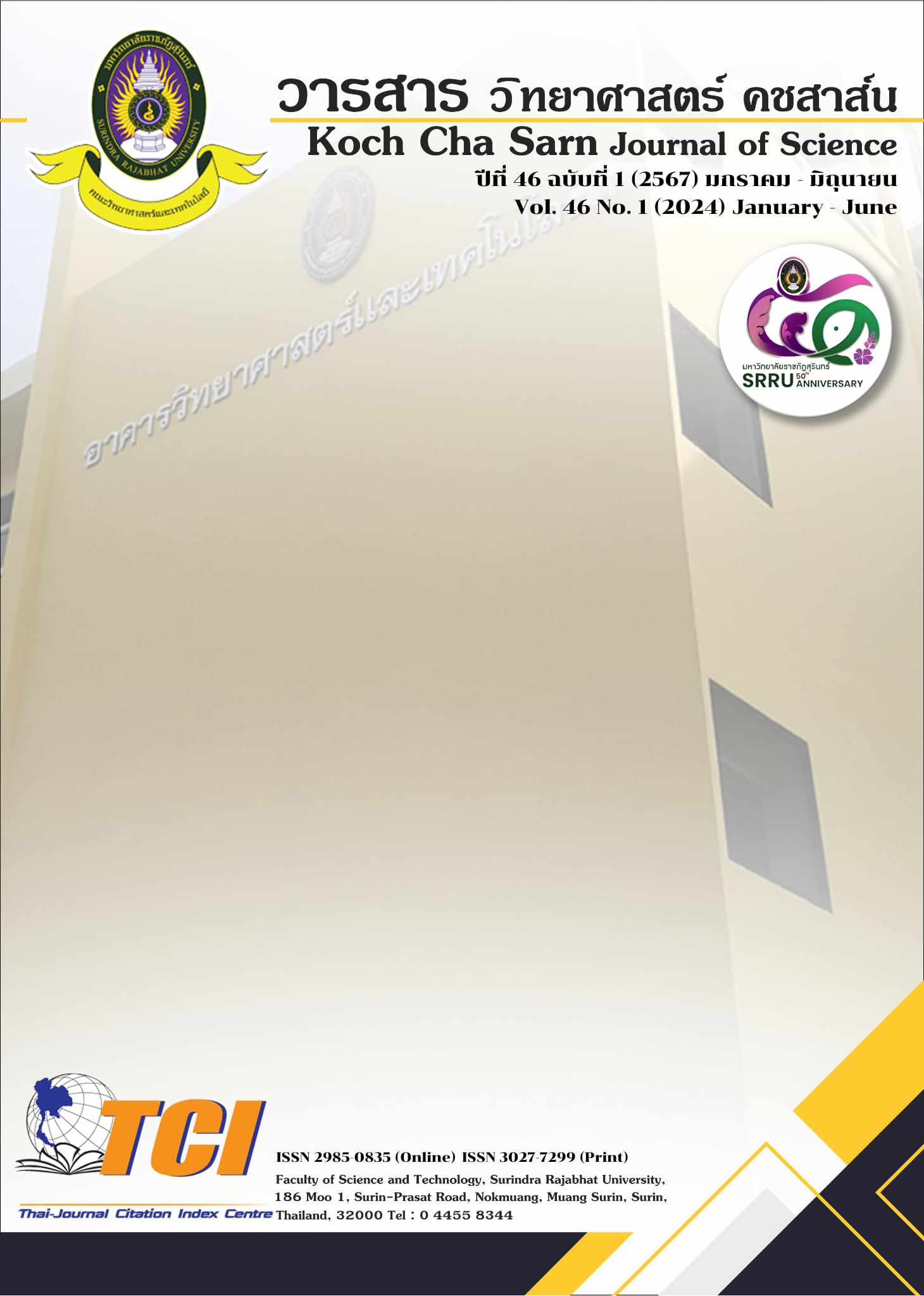Soybean Flour Supplemented for Nutritional Value Enhancement in Cookies
DOI:
https://doi.org/10.14456/kcsj.2024.2Keywords:
cookies, Soy flour, wheat flourAbstract
Soybean flour was used to substitute wheat flour at different percentage ratios from 0, 25, 50 and 75 for producing cookies. Cookies produced from 75 % substitution of soybean flour gave the highest protein content (13.17 %) and TBA value (0.06), while the highest fat (33.85%), moisture content (2.40 %) and carbohydrate (123.11 µg/ml) were found in the control (100 % wheat flour). During shelf life evaluation of cookies (0, 5, 10 and 15 days) the physical properties were examined and the results showed that moisture content and TBA value increased when their storage time increased.Twenty panelists evaluated the organoleptic characteristics of the cookies, the overall acceptability of control (100 % wheat flour) obtained the highest sensory score at 4.55 followed by 50 % with soybean substitution with sensory score at 4.10.
Downloads
References
เทคโนโลยีการผลิตถั่วเหลือง (2563) สถาบันวิจัยพืชไร่และพืชทดแทนพลังงาน กรมวิชาการเกษตร กระทรวงเกษตรและสหกรณ์ p. 1-20 ก.ค. 2563)
ศิริลักษณ์ สินธวาลัย (2535). การพัฒนาผลิตภัณฑ์ทางโภชนาการ. กรุงเทพฯ : ภาควิชาพัฒนาผลิตภัณฑ์ คณะอุตสาหกรรมเกษตร.
Guru (2013) คุกกี้ (Cookies)[ออนไลน์]. ได้จาก http://guru.google.co.th/guru/thread?tid=3debb2ffc944a9c7 [สืบค้นเมื่อ 29 สิงหาคม 2563]
Ampofo, V. (2009), Production and sensory analysis of soybean and wheat flour composite cake, HND Dissertation, Cape Coast Polytechnic, Cape Coast, Ghana, 1: 5-7.
Akubor P.I. and Ukwuru M. U., (2005). Functional properties and biscuit making potential of soybean and cassava flour blends, plant foods for Human Nutrition, 58:1-12.
AOAC, (2000). Official Methods of the Association of Official Chemists. Official Analytical Int, ArlingtonVA.
Banureka, V. D. and Mahendran, T. (2011). Formulation of Wheat-Soybean Biscuits and their Quality Characteristics: Tropical Agricultural Research and Extension: 12(2), February.
Clegg, K. M. (1956). The Application of the Anthrone Reagent to the Estimation of Starch in Cereals. J. Sci, Food Agric., 7 January, 1956. p. 40-44.
Ghosal, G. และ Kaushik, P. (2020). Development of soymeal fortified cookies to combat malnutrition. Legume Science, Volume 2(3), p. 1-13.
ISO (International Organization for Standardization). 2007. ISO 8589: Sensory analysis – General guidance for the design of test room, Geneva, Switzerland.
Kramer A. and Twigg, B. A., (1966). Fundamentals of quality control for the food industry. The AVI Publishing Company, Inc.
Pearson, D. 1976. The Chemical analysis of foods. 7th ed.Churchill Livingstone, London.
Sharma, Chhavi. and Devi, Amita. (2021) Effects of Soy and Water Chestnut Flour on the Quality of Cookies.Asian Journal of Dairy and Food Research. P. 1-5.
Singh, M., and Mohamed, A. 2005.Influence of gluten soy protein blenbs on the quality of reduced carbohydrates cookies, Journal of Food Science and Technology. 353- 360.
Soybeans 101: Nutrition Facta and Health Effects; 13 July 2022. https:// www.healthline.com).
SPSS About SPSS Inc. http://www.spss.com. (Accessed November 16, 2020).






